Galaxy
- pilot55kassas55
- 16 فبراير 2023
- 5 دقيقة قراءة
A galaxy is a system of stars, stellar remnants, interstellar gas, dust, dark matter, bound together by gravity.
Galaxies, averaging an estimated 100 million stars, range in size from dwarfs with less than a hundred million stars, to the largest galaxies known – supergiants with one hundred trillion stars, each orbiting its galaxy's center of mass. Most of the mass in a typical galaxy is in the form of dark matter, with only a few percent of that mass visible in the form of stars and nebulae. Supermassive black holes are a common feature at the centres of galaxies.
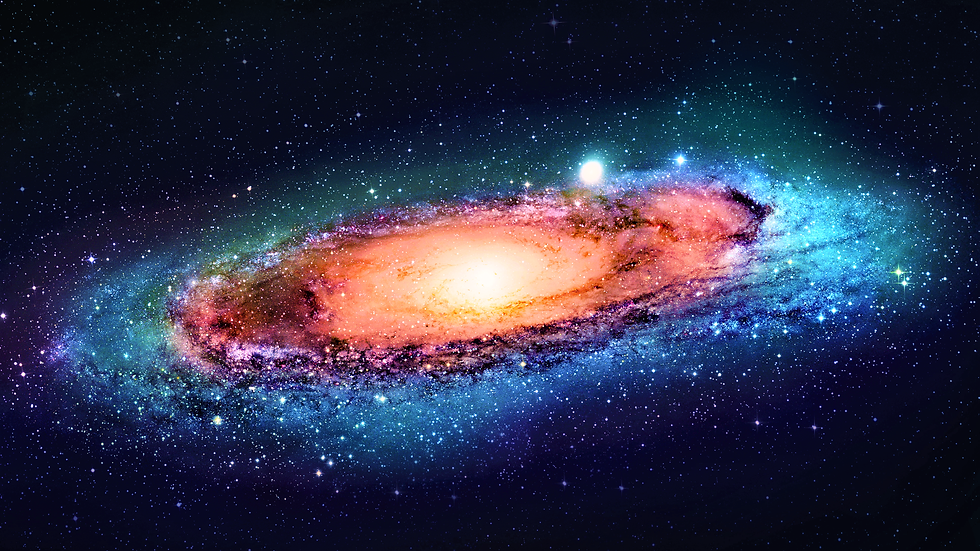
Types of Galaxies
Galaxies come in three main types: spirals, ellipticals, and peculiar. A slightly more extensive description of galaxy types based on their appearance is given by the Hubble sequence.
Spiral galaxy
Spiral galaxies form a class of galaxy originally described by Edwin Hubble in his 1936 work The Realm of the Nebulae and, as such, form part of the Hubble sequence. Most spiral galaxies consist of a flat, rotating disk containing stars, gas and dust, and a central concentration of stars known as the bulge. These are often surrounded by a much fainter halo of stars, many of which reside in globular clusters.
Spiral galaxies are named by their spiral structures that extend from the center into the galactic disc. The spiral arms are sites of ongoing star formation and are brighter than the surrounding disc because of the young, hot OB stars that inhabit them.
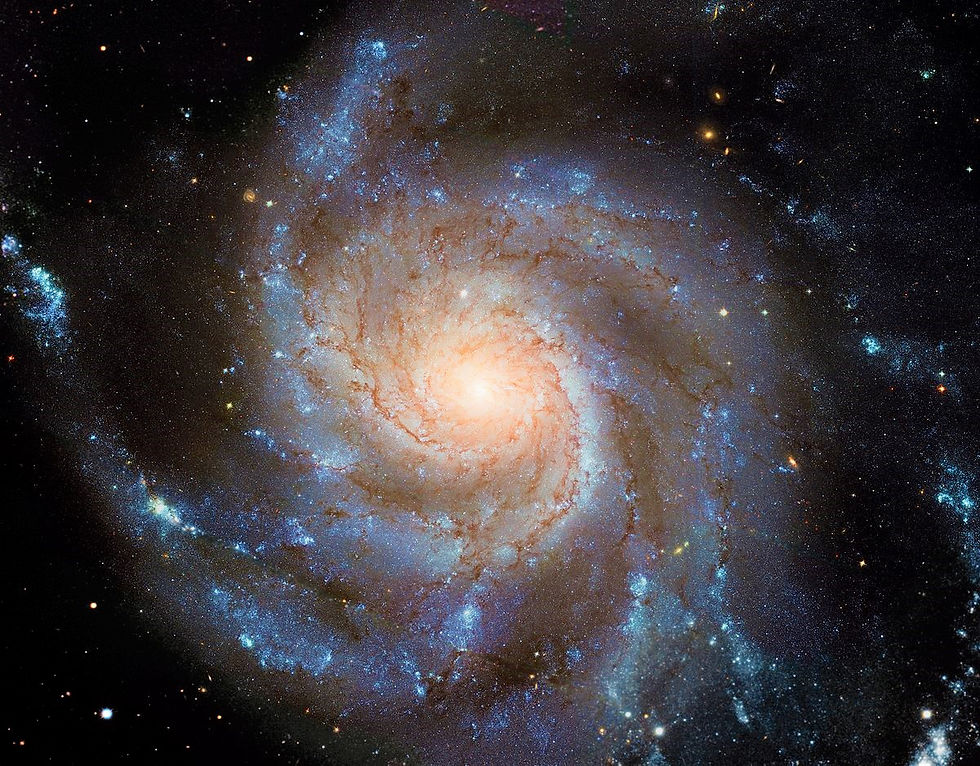
Elliptical galaxy
Elliptical galaxies are the most abundant type of galaxies found in the universe but because of their age and dim qualities, they're frequently outshone by younger, brighter collections of stars.
Elliptical galaxies lack the swirling arms of their more well-known siblings, spiral galaxies. Instead, they bear the rounded shape of an ellipse, a stretched-out circle.

Peculiar galaxy
A peculiar galaxy is a galaxy of unusual size, shape, or composition. Between five and ten percent of known galaxies are categorized as peculiar.

Structure of Galaxy
Nucleus
The nucleus is small region at the centre of a galaxy that emits a prodigious amount of energy in the form of radio, optical, X-ray, or gamma radiation or high-speed particle jets.
The observed energy is generated as matter accretes onto a supermassive black hole with a mass millions or even billions of times that of the Sun. The accreting matter can outshine the rest of the galaxy as it is heated in very high-speed collisions outside the black hole’s event horizon.
It is believed that many galaxies harbour these central black holes and that they might have been quasars in their early history, although they now appear to be dormant unless orbiting matter is accreting onto the black hole.
Bulge
The Bulge is a tightly packed group of stars within a larger star formation. The term almost exclusively refers to the central group of stars found in most spiral galaxies.
Disk
The disk or Galactic disc is a component of disc galaxies, such as spiral galaxies and lenticular galaxies.
Galactic discs consist of a stellar component (composed of most of the galaxy's stars) and a gaseous component (mostly composed of cool gas and dust).
The stellar population of galactic discs tend to exhibit very little random motion with most of its stars undergoing nearly circular orbits about the galactic center. Discs can be fairly thin because the disc material's motion lies predominantly on the plane of the disc (very little vertical motion).

Formation and evolution
About 300,000 years after the big bang, atoms of hydrogen and helium began to form, in an event called recombination. Nearly all the hydrogen was neutral (non-ionized) and readily absorbed light, and no stars had yet formed. As a result, this period has been called the "dark ages". It was from density fluctuations (or anisotropic irregularities) in this primordial matter that larger structures began to appear. As a result, masses of baryonic matter started to condense within cold dark matter halos. These primordial structures eventually became the galaxies we see today.
Within a billion years of a galaxy's formation, key structures begin to appear. Globular clusters, the central supermassive black hole, and a galactic bulge of metal-poor Population II stars form. The creation of a supermassive black hole appears to play a key role in actively regulating the growth of galaxies by limiting the total amount of additional matter added. During this early epoch, galaxies undergo a major burst of star formation.
During the following two billion years, the accumulated matter settles into a galactic disc. A galaxy will continue to absorb infalling material from high-velocity clouds and dwarf galaxies throughout its life. This matter is mostly hydrogen and helium. The cycle of stellar birth and death slowly increases the abundance of heavy elements, eventually allowing the formation of planets.
The evolution of galaxies can be significantly affected by interactions and collisions. Mergers of galaxies were common during the early epoch, and the majority of galaxies were peculiar in morphology. Given the distances between the stars, the great majority of stellar systems in colliding galaxies will be unaffected. However, gravitational stripping of the interstellar gas and dust that makes up the spiral arms produces a long train of stars known as tidal tails.

Galaxy merger
Galaxy mergers can occur when two (or more) galaxies collide. They are the most violent type of galaxy interaction. The gravitational interactions between galaxies and the friction between the gas and dust have major effects on the galaxies involved. The exact effects of such mergers depend on a wide variety of parameters such as collision angles, speeds, and relative size/composition, and are currently an extremely active area of research. Galaxy mergers are important because the merger rate is a fundamental measurement of galaxy evolution. The merger rate also provides astronomers with clues about how galaxies bulked up over time.
During the merger, stars and dark matter in each galaxy become affected by the approaching galaxy. Toward the late stages of the merger, the gravitational potential (i.e. the shape of the galaxy) begins changing so quickly that star orbits are greatly altered, and lose any trace of their prior orbit. This process is called “violent relaxation”.For example, when two disk galaxies collide they begin with their stars in a orderly rotation in the planes of the two separate disks. During the merger, that ordered motion is transformed into random energy (“thermalized”). The resultant galaxy is dominated by stars that orbit the galaxy in a complicated and random interacting network of orbits, which is what is observed in elliptical galaxies.

Milky Way
The Milky Way is the galaxy that includes the Solar System, with the name describing the galaxy's appearance from Earth: a hazy band of light seen in the night sky formed from stars that cannot be individually distinguished by the naked eye.
The Milky Way is one of spiral galaxies, and one of the two largest galaxies. The total of stars approximate 400 billion stars, which means we need about 100,000 light-years to cross it.
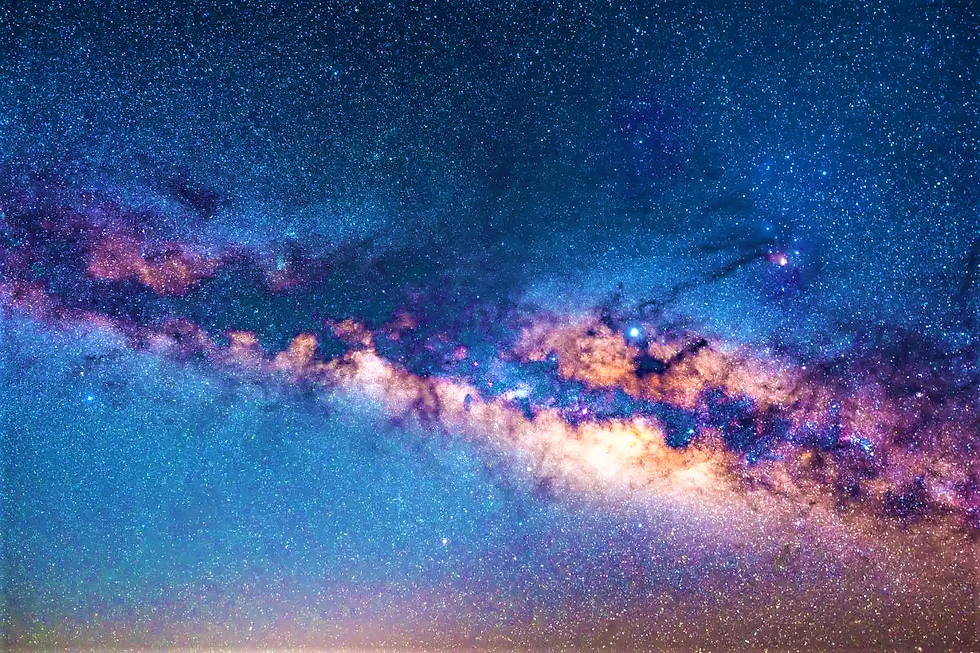
Andromeda
Andromeda is a great spiral galaxy, and it is the nearest us, it’s one of the few visible to the unaided eye.
It is located about 2,480,000 light-years from Earth, its diameter is approximately 200,000 light-years, and it shares various characteristics with the Milky Way system.



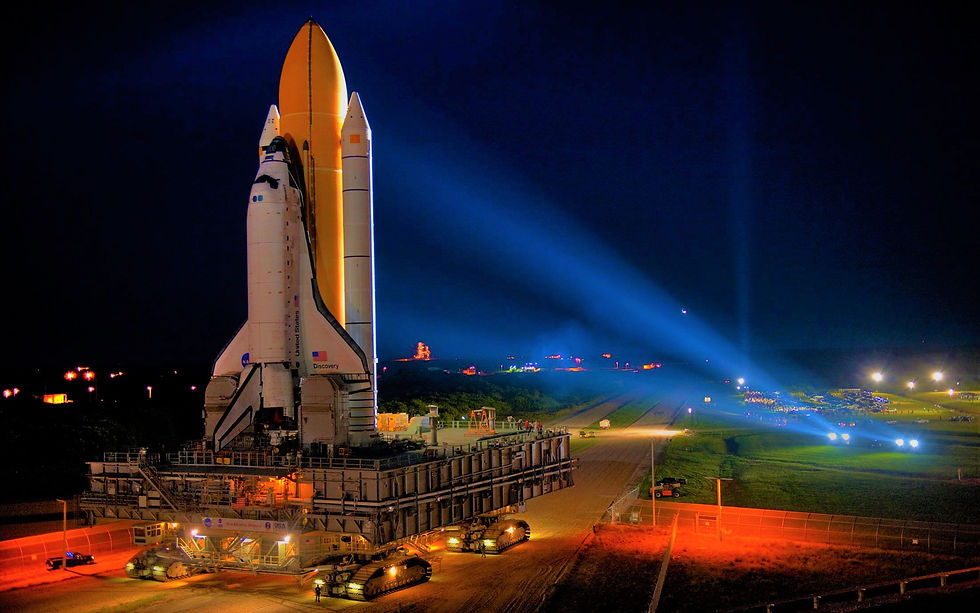
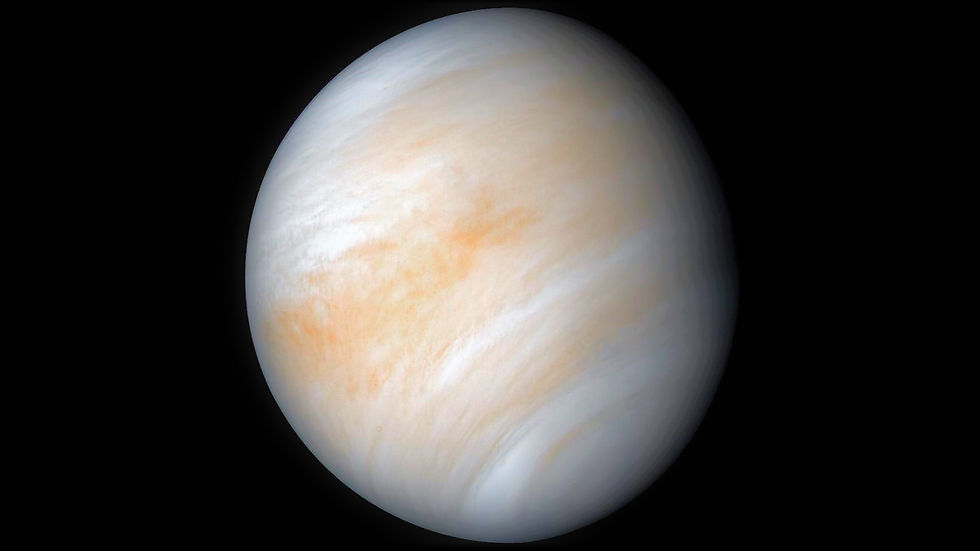
تعليقات